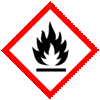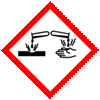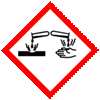DDAC or Didecyl Dimethyl Ammonium Chloride Manufacturers, with SDS MSDS Sheet 80% and 10% Dilute |
Supplier, Manufacturer, Exporter of DDAC, Didecyl Dimethyl Ammonium Chloride, Muby Chemicals of Mubychem Group, established in 1976, is the original manufacturers of Specialty Chemicals, Pharmaceutical Excipient, Fragrance Food & Flavor chemicals, Reagent Grade Chemicals, Shale Gas Fracturing Chemicals in India. Mubychem Group has several manufacturing facilities spread across Western India and world wide contacts and toll manufacturers. We are exporting globally to countries like USA, Canada, Europe, UAE, South Africa, Tanzania, Kenya, Egypt, Nigeria, Cameroon, Uganda, Turkey, Mexico, Brazil, Chile, Peru, Argentina, Dubai, Korea, Vietnam, Thailand, Malaysia, Indonesia, Australia, China, Germany, France, Italy, Portugal, Bangladesh, etc. The products are offered as per required specifications and in correct shape and size in mm or meshs or microns as specified by the buyer. The participating units have one or more accreditations like FDA - cGMP and GLP approval, ISO-9001 Certified, "REACH" Registered, ISO-14001, ISO/IEC 17025, ISO-22000, FSSC 22000, ISO 45001, Kosher Certified, Halal Certified, HACCP, FSSAI. We offer Commercial Pure & IP BP EP Ph Eur USP NF JP FCC Food Grade Analytical Reagent Grades of Chemicals |
| Bookmark this Web Site -- or -- Email This Page Info to a Colleague or Yourself |
Search our website here:







Didecyl Dimethyl Ammonium Chloride CAS Number 7173-51-5, EINECS EC Number 230-525-2, HS Code ---**; Molecular Weight 362.1, Molecular Formula: C22H48ClN
How big is your requirement or how small
We serve it all.
Specifications, Safety Data Sheet, Manufacturing process details, Wholesale retail buy sell prices, Uses etc available on line in these pages for Didecyl Dimethyl Ammonium Chloride DDAC.
For MSDS Sheet Click
MSDS Sheet of Didecyl Dimethyl Ammonium Chloride DDAC or Manufacturers
Spanish Cloruro de didecil dimetil amonio DDAC o fabricantes
Portuguese DDAC, Didecil Dimetil cloreto de amônio DDAC fabricantes
Korean 디데실 디메틸 염화암모늄 DDAC 제조업체
Didecyl Dimethyl Ammonium Chloride
DDAC Suppliers
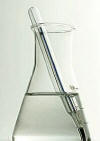
In the USA, UAE, Iran Iraq, Kuwait, Saudi Arabia and other oil producing areas, several hundred chemical compounds are used in hydraulic fracturing also called fracking, fracing or frac. In some areas like UK only 'Non-Hazardous' chemicals are permitted for fracturing fluids by the Environment Agency. All chemicals have to be declared publicly and increasingly, food additive based chemicals are available to allow fracking to take place safely.
Mubychem is an internationally preferred source for Stimulation Chemicals and Hydraulic Fracturing Chemicals. We serve various oil and shale gas producing countries like USA UAE, Kuwait, Iran, Iraq, Saudi Arabia, UK, Europe India etc. We are never too far from your well-site with multiple 24/7 company owned or rented warehouses in the India, USA and across the globe. With customers in several countries, we sell almost all the fracturing chemicals.
Didecyldimethylammonium chloride is an antiseptic/disinfectant that is used in many biocidal applications. It is a broad spectrum bactericidal and fungicidal and can be used as disinfectant cleaner for several uses. It is recommended for use in hospitals, hotels and industries. It is used as a general purpose disinfectant and sanitizer, in laundries, for treating cooling tower and oil field flood waters, and as a wood preservative. It is also used as an antimicrobial for food handling facilities, medical equipment, water storage and purification equipment, swimming pools, industrial water systems oil drilling muds, oil well injection, and wastewater etc.
Specifications
| Didecyl Dimethyl Ammonium Chloride | - |
| Synonym | N,N-Didecyl-N,N-dimethylammonium chloride |
| Classification | Quaternary Ammonium Compound |
| Characteristic | Light yellow clear liquid |
| Purity | > 99% on dry basis. |
We also manufacture and supply as under:
Benzyltriethylammonium Chloride
Cetyltrimethylammonium Chloride or Cetrimonium Chloride
Decyltrimethylammonium Bromide
2,3-Dimethyl-4-Nitropyridine-N-Oxide
Tetramethylammonium Hydroxide.
Manufacturers:
MUBY CHEMICALS
Ambernath Mumbai, Ankleshwar Gujarat, India
TEL: (OFFICE) +912223770100, +912223726950
Current Date Time in India GMT+5:30
e-mail: info@mubychem.com
USA, Canada, Mexico and other American
neighbouring buyers may
e-mail: us@mubychem.com
Call toll-free 1-877-682-9243 (1-877-MUBYCHEM)

Copyright and Usual Disclaimer is Applicable.
Last :
18 July, 2024




Exporters to USA Canada UAE Europe South Africa Tanzania Kenya Uganda Egypt Nigeria Turkey Mexico Brazil Argentina Chile Dubai etc.
Global or International Suppliers, Exporters, Importers, Manufacturers
I shall pass through this world, but once. If therefore, there is any good that I can do, or if there is any favor that I can show to a fellow human being, let me do it now. Let me not defer or neglect it. For I shall not tread this way again
DDAC, Didecyl Dimethyl Ammonium Chloride SDS, Safety Data Sheet
MSDS Sheet, Material Safety Data Sheet 11-Oct-20
1. Product Identification
Product Name & Other Names: DDAC, Didecyl Dimethyl Ammonium Chloride, Didecyldimethyl Ammonium Chloride
CAS No.: 7173-51-5 for DDAC
EINECS EC Code: 230-525-2 for DDAC
Molecular Weight: 362.1
Molecular Formula: C22H48ClN
Relevant uses and uses advised against (if any): Fracturing and Industrial Manufacturing Use.
Supplier: As per letterhead.
2. Hazards Identification
GHS, Globally Harmonized System Classification in accordance with 29 CFR 1910
Classification according to Regulation (EC) No 1272/2008
Combustible liquid (Category 4), H227
Acute toxicity, Oral (Category 3), H302
Skin corrosion/irritation Category 1A, B, C, H314
Acute aquatic toxicity (Category 1), H400
Labeling according to GHS USA & Regulation (EC) No 1272/2008
GHS Label Elements 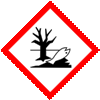 Aquatic Toxicity |
GHS Label Elements |
GHS Label Elements |
Signal Words: Danger
Hazard statements:
H227: Combustible liquid
H302: Harmful if swallowed
H314: Causes severe skin burns and eye damage.
H335: May cause respiratory irritation.
H400: Very toxic to aquatic life.
Precautionary statements:
P210: Keep away from heat/sparks/open flames/hot surfaces – No smoking.
P261: Avoid breathing dust/ fume/ gas/ mist/ vapors/ spray.
P262: Do not get in eyes, on skin, or on clothing.
P264: Wash skin thoroughly after handling.
P270 Do not eat, drink or smoke when using this product.
P273: Avoid release to the environment.
P280: Wear protective gloves/protective clothing/eye protection/face protection.
P301+P330+ P331: IF SWALLOWED: Rinse mouth. Do NOT induce vomiting.
P303+P361+P353: IF ON SKIN (or hair): Remove/Take off immediately all contaminated clothing. Rinse skin with water/shower.
P304+P340: IF INHALED: Remove victim to fresh air and keep at rest in a position comfortable for breathing.
P305+ P351+P338: IF IN EYES: Rinse cautiously with water for several minutes. Remove contact lenses, if present and easy to do. Continue rinsing.
P310: Immediately call a POISON CENTER or doctor/physician.
P314: Get Medical advice/attention if you feel unwell.
P337+P313: If eye irritation persists: Get medical advice/ attention.
P403+P235: Store in a well ventilated place. Keep cool.
P363: Wash contaminated clothing before reuse
P391: Collect spillage.
P405: Store locked up.
P501: Dispose of contents/ container to an approved waste disposal plant.
Classification according to EU Directives 67/548/EEC or 1999/45/EC:
Hazard Symbol:
C = Corrosive
Xn Harmful
N = Dangerous for the environment
Risk Phrase:
R22 = Harmful if swallowed.
R34 = Causes burns.
R37 Irritating to respiratory system
R41 Risk of serious damage to eyes
R50 = Very toxic to aquatic organisms.
3. Composition/Information on Ingredients
Ingredient:| Item & -------------------------------- CAS Number | Percentage |
Didecyldimethyl Ammonium Chloride - 7173-51-5 |
80-82% |
Ethanol ------------------------------- 64-17-5 |
10-17% |
Water -------------------------------- 7732-18-5 |
QS |
4. First Aid Measures
Always seek medical attention after first aid measures are provided.
Inhalation: If inhaled, remove to fresh air. If not breathing, give artificial respiration. If breathing is difficult, give oxygen. Mists and vapors can irritate the throat and respiratory tract. High vapor concentrations may cause central nervous system effects. May be fatal if inhaled. Symptoms may include headaches, dizziness, and drowsiness. Get medical attention.
Ingestion: Ingestion can cause gastrointestinal irritation, nausea, vomiting and diarrhea and even death. Contact medical center quickly. Never give anything by mouth to an unconscious person. Get medical attention.
Skin Contact: Causes corrosive burns. Brief exposures may cause irritation and defatting of the skin. Immediately flush skin with plenty of water for at least 15 minutes. Remove contaminated clothing and shoes. Get medical attention. Wash clothing before reuse. Thoroughly clean shoes before reuse.
Eye Contact: Causes burns and may result in permanent injury to eyes including blindness. Check for and remove any contact lenses. Immediately flush eyes with running water for at least 15 minutes, keeping eyelids open. Cold water may be used. Get medical attention.
5. Fire Fighting Measures
Fire: Flash point: 109F (43C) - Closed Cup.
Auto ignition temperature: NA
Toxic fumes, nitrogen oxides and carbon monoxide may be formed in fire. Explosive mixtures can form with air. Combustion products are toxic. Solvent vapors can travel to an ignition source and flash back.
Fire Extinguishing Media: Dry chemical, foam, carbon dioxide or water fog. Solid water streams may spread burning liquid. Water may not be effective.
Special Information: In the event of a fire, wear full protective clothing and NIOSH-approved self-contained breathing apparatus with full face piece operated in the pressure demand or other positive pressure mode.
6. Accidental Release Measures
Personal precautions, protective equipment and emergency procedures: Avoid breathing dust/fumes/gas/mist/vapors/spray. Ensure adequate ventilation. Use individual protective equipment (waterproof boots, suitable protective clothing, safety glasses, etc.). Restrict unprotected personnel from the area. Prevent any contact with hot surfaces. Do not approach facing the wind. Do not touch the spilled material.
Environmental precautions: Do not let the product enter drains, soil or water sources.
Methods and materials used for containment Cleanup procedures and Storage:
Small Spill: Mop and pick up the material and place in an appropriate waste disposal container. Finish cleaning by spreading water on the contaminated surface and dispose of according to local and regional authority requirements.
Large Spill: Contain spilled material. Isolate spill or leak area immediately. Keep unauthorized personnel away. Stay upwind. Keep out of low areas where vapors may accumulate. Eliminate all ignition sources (no smoking, flares, sparks or flames) in immediate area. Keep away from heat. Keep away from sources of ignition. Provide ventilation. Prevent entry into waterways, sewers, basements or confined areas. Absorb or cover with dry earth, sand or other non-combustible material and transfer to containers. Use clean non-sparking tools to collect absorbed material.
7. Handling and Storage
Precautions for safe handling: Apply according to good manufacturing and industrial hygiene practices. Ensure proper ventilation. Wash thoroughly after handling. Do not drink, eat or smoke while handling. Avoid contact with skin, eyes and clothing. Minimize dust generation. Avoid breathing dust/fumes/gas/mist/vapors/spray. Avoid contact with eyes, skin, and clothing. Keep container tightly closed. Avoid ingestion and inhalation. Use individual protective equipment (waterproof boots, suitable protective clothing, safety glasses, etc.). Prevent any contact with hot surfaces.
Conditions for safe storage, including any incompatibilities: Store in cool, dry and ventilated area away from heat sources and protected from sunlight in tightly closed original container. Keep air contact to a minimum. Do not leave the material container open. Store protected from heat, sparks and ignition sources and incompatible materials. Avoid contact with skin and eyes. Avoid inhalation of dust/mist/vapor. Do not store with incompatible materials like acids, oxidizing agents, heat and sparks. Containers may be hazardous when empty.
8. Exposure Controls/Personal Protection
Airborne Exposure Limits:
Ethanol:
AICGIH TWA: 1000ppm (TWA)
NIOSH: 1000 ppm (TWA)
Ventilation System: A system of local and/or general exhaust is recommended to keep employee exposures as low as possible. Local exhaust ventilation is generally preferred because it can control the emissions of the contaminant at its source, preventing dispersion of it into the general work area. Please refer to the ACGIH document, Industrial Ventilation, A Manual of Recommended Practices, most recent edition, for details.
Personal Respirators (NIOSH Approved): For conditions of use where exposure to the substance is apparent and engineering controls are not feasible, consult an industrial hygienist. For emergencies, or instances where the exposure levels are not known, use a full-face piece positive-pressure, air-supplied respirator. WARNING: Air purifying respirators do not protect workers in oxygen-deficient atmospheres.
Skin Protection: Wear impervious protective clothing, including boots, gloves, lab coat, apron or coveralls, as appropriate, to prevent skin contact.
Eye Protection: Use chemical safety goggles and/or a full face shield where splashing is possible. Maintain eye wash fountain and quick-drench facilities in work area.
Other Control Measures: Maintain good housekeeping in work area. Dust deposits on floors and other surfaces may pick up moisture and cause the surfaces to become slippery and present safety hazards. Handle in accordance with good industrial hygiene and safety practice. Wash hands after handling.
9. Physical and Chemical Properties
Appearance: Pale Yellow Viscous Liquid.
Odor: Alcohol & Benzaldehyde Type .
Odor threshold: Not available.
pH: 6-9 for 10% solution.
Relative density: 0.92 – 0.96
Melting point/freezing point: Not available.
Initial boiling point and boiling range: Not available.
Flash point: Not available.
Auto-ignition temperature: Not available.
Decomposition temperature: Not available.
Upper/lower flammability or explosive limits: Not available.
Vapor pressure: Not available.
Vapor density: Not available.
Evaporation rate: Not available.
Flammability (solid, gas): Not available.
Partition coefficient: n-octanol/water: Not available.
Solubility: Miscible with water
Viscosity: Not available.
Molecular Weight: 362.1
Molecular Formula: C22H48ClN
10. Stability and Reactivity
Stability: Stable under ordinary conditions of use and storage.
Hazardous Decomposition Products: Carbon dioxide, carbon monoxide, nitrogen oxides and toxic fumes may form when heated to decomposition.
Hazardous Polymerization: Not reported. However, it can explode under certain conditions.
Incompatibilities: Acids, oxidizing agents, heat and sparks.
Conditions to Avoid: Heat, flames, ignition sources and incompatibles.
11. Toxicological Information
DDAC:
Oral rat LD50: 3300 mg/kg for diluted material
Dermal LD50 >2000 mg/kg
Mutagenic Effects: Not available.
Developmental Toxicity: Not available.
Reproductive Effects: No information available.
Ethyl alcohol:
Oral rat LD50: 1501 mg/kg
Inhalation rat LC50: 124.7 mg/L
Mutagenic Effects: Not available.
Teratogenic Effects: Not available.
Developmental Toxicity: Not available.
Reproductive Effects: No information available.
IARC Monographs: Overall evaluation
Ethanol (64-17-5) 1 Carcinogenic to humans.
US ACGIH Threshold Limit Values: A3 carcinogen
Ethanol (64-17-5) Group A3 Confirmed animal carcinogen with unknown relevance to humans.
12. Ecological Information
Toxicity to fish: LC50 - Brachydanio rerio (zebrafish) - 0,49 mg/l - 96 h
Toxicity to daphnia and other aquatic invertebrates: EC50 - Daphnia magna (Water flea) - 0,094 mg/l - 48 h
Environmental Toxicity: Very Toxic to aquatic organisms.
Results of PBT and vPvB assessment: This substance/mixture contains no components considered to be either persistent, bioaccumulative and toxic (PBT), or very persistent and very bioaccumulative (vPvB) at levels of 0.1% or higher.
This product is biodegradable.
13. Disposal Considerations
Whatever cannot be saved for recovery or recycling should be managed in an appropriate and approved waste disposal facility. Processing use or contamination of this product may change the waste management options. State and local disposal regulations may differ from federal disposal regulations. Dispose of container and unused contents in accordance with federal, state and local requirements.
14. Transport Information
DOT USA & ADR/RID Europe
Hazard Class: 8 Corrosive
Proper Shipping Name: UN2924, Flammable Liquid, Corrosive, N.O.S. (Ethanol, Didecyl Dimethyl Ammonium Chloride), 8, PG III
DOT, IMDG, IATA Hazard Class:
Hazard Class: 8 Corrosive
Proper Shipping Name: UN2924, Flammable Liquid, Corrosive, N.O.S. (Ethanol, Didecyl Dimethyl Ammonium Chloride), 8, PG III.
15. Regulatory Information
USA:
SARA 302: No chemicals in this material are subject to the reporting requirements of SARA Title III, Section 302.
SARA 313: This material does not contain any chemical components with known CAS numbers that exceed the threshold (De Minimis) reporting levels established by SARA Title III, Section 313.
SARA 311/312 Hazards: Acute Hazard, Fire.
California Prop 65: No Significant Risk Level: None of the chemicals in this product are listed.
DISCLAIMER: The information and recommendations set forth herein are presented in good faith and believed correct as of the date hereof. It is compiled from various sources and it is not necessarily all inclusive nor fully adequate in every circumstance. In addition, these suggestions should not be confused with nor followed in violation of applicable laws, regulations, rules or insurance requirements applicable. This MSDS sheet is intended only as a guide to the appropriate precautionary handling of the material by a properly trained person using this product. Individuals receiving the information must exercise their independent judgment in determining its appropriateness for a particular purpose.
DDAC Solution, Didecyl Dimethyl Ammonium Chloride 10% Dilute SDS Safety Data Sheet
MSDS Sheet, Material Safety Data Sheet 11-Oct-20
1. Product Identification
Product Name/Synonyms: DDAC Solution or Didecyl Dimethyl Ammonium Chloride Solution, Didecyldimethyl Ammonium Chloride Solution.
CAS No.: 7173-51-5 for DDAC
EINECS EC Code: 230-525-2 for DDAC
Molecular Weight: 362.1 for dry material.
Molecular Formula: C22H48ClN
Recommended uses and uses advised against: Fracturing and Industrial Manufacturing Use.
SUPPLIER: As per letterhead.
2. Hazards Identification
GHS, Globally Harmonized System Classification in accordance with 29 CFR 1910
Classification according to Regulation (EC) No 1272/2008
Acute toxicity, Oral (Category 3), H302
Skin corrosion/irritation Category 1A, B, C, H314
Acute aquatic toxicity (Category 1), H400
Labeling according to GHS USA & Regulation (EC) No 1272/2008
GHS Label Elements 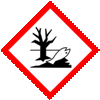 Aquatic Toxicity |
GHS Label Elements |
Signal Words: Danger
Hazard statements:
H302: Harmful if swallowed
H314: Causes severe skin burns and eye damage.
H400: Very toxic to aquatic life.
Precautionary statements:
P210: Keep away from heat/sparks/open flames/hot surfaces – No smoking.
P261: Avoid breathing dust/ fume/ gas/ mist/ vapors/ spray.
P262: Do not get in eyes, on skin, or on clothing.
P264: Wash skin thoroughly after handling.
P270 Do not eat, drink or smoke when using this product.
P273: Avoid release to the environment.
P280: Wear protective gloves/protective clothing/eye protection/face protection.
P301+P330+ P331: IF SWALLOWED: Rinse mouth. Do NOT induce vomiting.
P303+P361+P353: IF ON SKIN (or hair): Remove/Take off immediately all contaminated clothing. Rinse skin with water/shower.
P304+P340: IF INHALED: Remove victim to fresh air and keep at rest in a position comfortable for breathing.
P305+ P351+P338: IF IN EYES: Rinse cautiously with water for several minutes. Remove contact lenses, if present and easy to do. Continue rinsing.
P310: Immediately call a POISON CENTER or doctor/physician.
P314: Get Medical advice/attention if you feel unwell.
P337+P313: If eye irritation persists: Get medical advice/ attention.
P360: Rinse immediately contaminated clothing and skin with plenty of water before removing clothes.
P403+P235: Store in a well ventilated place. Keep cool.
P363: Wash contaminated clothing before reuse
P391: Collect spillage.
P405: Store locked up.
P501: Dispose of contents/ container to an approved waste disposal plant.
Classification according to EU Directives 67/548/EEC or 1999/45/EC:
Hazard Symbols:
C = Corrosive
Xn Harmful
N = Dangerous for the environment
Risk Phrases:
R22 = Harmful if swallowed.
R41 Risk of serious damage to eyes
R34 = Causes burns.
R50 = Very toxic to aquatic organisms.
3. Composition/Information on Ingredients
Ingredient:| Item and -------------------------------------- CAS Number | Percentage |
Didecyldimethyl Ammonium Chloride - 7173-51-5 |
8-12% |
Ethanol ------------------------------- 64-17-5 |
<3% |
Water -------------------------------- 7732-18-5 |
QS |
4. First Aid Measures
Always seek medical attention after first aid measures are provided.
Inhalation: If inhaled, remove to fresh air. If not breathing, give artificial respiration. If breathing is difficult, give oxygen. Mists and vapors can irritate the throat and respiratory tract. High vapor concentrations may cause central nervous system effects. May be fatal if inhaled. Symptoms may include headaches, dizziness, and drowsiness. Get medical attention.
Ingestion: Ingestion can cause gastrointestinal irritation, nausea, vomiting and diarrhea and even death. Contact medical center quickly. Never give anything by mouth to an unconscious person. Get medical attention.
Skin Contact: Causes corrosive burns. Brief exposures may cause irritation and defatting of the skin. Immediately flush skin with plenty of water for at least 15 minutes. Remove contaminated clothing and shoes. Get medical attention. Wash clothing before reuse. Thoroughly clean shoes before reuse.
Eye Contact: Causes burns and may result in permanent injury to eyes including blindness. Check for and remove any contact lenses. Immediately flush eyes with running water for at least 15 minutes, keeping eyelids open. Cold water may be used. Get medical attention.
5. Fire Fighting Measures
Auto ignition temperature: NA
Toxic fumes, nitrogen oxides and carbon monoxide may be formed in fire. Explosive mixtures can form with air. Combustion products are toxic. Solvent vapors can travel to an ignition source and flash back.
Fire Extinguishing Media: Dry chemical, foam, carbon dioxide or water fog. Solid water streams may spread burning liquid. Water may not be effective.
Special Information: In the event of a fire, wear full protective clothing and NIOSH-approved self-contained breathing apparatus with full face piece operated in the pressure demand or other positive pressure mode.
6. Accidental Release Measures
Personal precautions, protective equipment, environmental precautions and emergency procedures: Wear protective gloves/protective clothing/eye protection/face protection. Do not get in eyes, on skin, or on clothing. Stay upwind. Provide ventilation. Prevent entry into waterways, sewers, basements, or confined areas.
Methods and materials used for containment Cleanup procedures and Storage:
Small Spill: Mop and pick up the material and place in an appropriate waste disposal container. Finish cleaning by spreading water on the contaminated surface and dispose of according to local and regional authority requirements.
Large Spill: Isolate spill or leak area immediately. Keep unauthorized personnel away. Stay upwind. Keep out of low areas where vapors may accumulate. Eliminate all ignition sources (no smoking, flares, sparks, or flames) in immediate area. Keep away from heat. Keep away from sources of ignition. Provide ventilation. Prevent entry into waterways, sewers, basements, or confined areas. Absorb or cover with dry earth, sand or other non-combustible material and transfer to containers. Use clean non-sparking tools to collect absorbed material.
7. Handling and Storage
Precautions for safe handling: Keep away from heat and source of fire preferably in a ventilated area. Wear protective gloves/protective clothing/eye protection/face protection. Do not get in eyes, on skin, or on clothing. Provide ventilation.
Conditions for safe storage, including any incompatibilities:
Keep away from heat and source of fire preferably in a ventilated area. Keep in tightly closed container. Do not breathe vapors mist. Containers may be hazardous when empty since they retain product residues (vapors, liquid); observe all warnings and precautions listed for the product.
8. Exposure Controls/Personal Protection
Airborne Exposure Limits:
Ethanol:
AICGIH TWA: 1000ppm (TWA)
NIOSH: 1000 ppm (TWA)
Ventilation System: A system of local and/or general exhaust is recommended to keep employee exposures as low as possible. Local exhaust ventilation is generally preferred because it can control the emissions of the contaminant at its source, preventing dispersion of it into the general work area. Please refer to the ACGIH document, Industrial Ventilation, A Manual of Recommended Practices, most recent edition, for details.
Personal Respirators (NIOSH Approved): For conditions of use where exposure to the substance is apparent and engineering controls are not feasible, consult an industrial hygienist. For emergencies, or instances where the exposure levels are not known, use a full-face piece positive-pressure, air-supplied respirator. WARNING: Air purifying respirators do not protect workers in oxygen-deficient atmospheres.
Skin Protection: Wear impervious protective clothing, including boots, gloves, lab coat, apron or coveralls, as appropriate, to prevent skin contact.
Eye Protection: Use chemical safety goggles and/or a full face shield where splashing is possible. Maintain eye wash fountain and quick-drench facilities in work area.
Other Control Measures: Maintain good housekeeping in work area. Dust deposits on floors and other surfaces may pick up moisture and cause the surfaces to become slippery and present safety hazards. Handle in accordance with good industrial hygiene and safety practice. Wash hands after handling.
9. Physical and Chemical Properties
Appearance: Colorless to Yellowish Liquid.
Odor: Alcohol & Benzaldehyde Type .
Odor threshold: Not available.
pH: 6-12 for 10% solution.
Relative density: 1.0046 (8.38 lbs/gal) for diluted material.
Melting point/freezing point: Not available.
Initial boiling point and boiling range: Not available.
Flash point: Not available.
Auto-ignition temperature: Not available.
Decomposition temperature: Not available.
Upper/lower flammability or explosive limits: Not available.
Vapor pressure: Not available.
Vapor density: Not available.
Evaporation rate: Not available.
Flammability (solid, gas): Not available.
Partition coefficient: n-octanol/water: Not available.
Solubility: Miscible with water
Viscosity: Not available.
Molecular Weight: 362.1
Molecular Formula: C22H48ClN
10. Stability and Reactivity
Stability: DDAC, Didecyldimethyl Ammonium Chloride is stable under ordinary conditions of use and storage.
Hazardous Decomposition Products: Carbon dioxide, carbon monoxide, nitrogen oxides and toxic fumes may form when heated to decomposition.
Hazardous Polymerization: Not reported. However, it can explode under certain conditions.
Incompatibilities: Acids, oxidizing agents, heat, and sparks.
Conditions to Avoid: Heat, flames, ignition sources and incompatibles.
11. Toxicological Information
DDAC:
Oral rat LD50: 3300 mg/kg for diluted material
Dermal LD50 >2000 mg/kg
Ethyl alcohol:
Oral rat LD50: 1501 mg/kg
Inhalation rat LC50: 124.7 mg/L
Mutagenic Effects: Not available.
Teratogenic Effects: Not available.
Developmental Toxicity: Not available.
Reproductive Effects: No information available.
IARC Monographs: Overall evaluation
Ethanol (64-17-5) 1 Carcinogenic to humans.
US ACGIH Threshold Limit Values: A3 carcinogen
Ethanol (64-17-5) Group A3 Confirmed animal carcinogen with unknown relevance to humans.
12. Ecological Information
Toxicity to fish: LC50 - Brachydanio rerio (zebrafish) - 0,49 mg/l - 96 h
Toxicity to daphnia and other aquatic invertebrates: EC50 - Daphnia magna (Water flea) - 0,094 mg/l - 48 h
Environmental Toxicity: Very Toxic to aquatic organisms.
Results of PBT and vPvB assessment: This substance/mixture contains no components considered to be either persistent, bioaccumulative and toxic (PBT), or very persistent and very bioaccumulative (vPvB) at levels of 0.1% or higher.
This product is biodegradable.
13. Disposal Considerations
Whatever cannot be saved for recovery or recycling should be managed in an appropriate and approved waste disposal facility. Processing use or contamination of this product may change the waste management options. State and local disposal regulations may differ from federal disposal regulations. Dispose of container and unused contents in accordance with law.
14. Transport Information
Department of Transportation DOT USA & ADR/RID Europe
UN1903
UN1903, Disinfectants. Liquid, Corrosive N.O.S., (Quaternary Ammonium Compound), 8, PG II.
Hazard Class(es): 8 - Corrosive; Packing Group: PG II
International Maritime Organization (IMDG) & International Carriage by Rail/Road (RID/ADR)
UN1903
UN1903, Disinfectants. Liquid, Corrosive N.O.S., (Quaternary Ammonium Compound), 8, PG II.
Hazard Class(es): 8 - Corrosive; Packing Group: PG II
International Air Transportation Association (IATA)
UN1903
UN1903, Disinfectants. Liquid, Corrosive N.O.S., (Quaternary Ammonium Compound), 8, PG II.
Hazard Class(es): 8 - Corrosive; Packing Group: PG II
15. Regulatory Information
USA:
SARA 302: Not listed.
SARA 313: Not listed.
Section 16 - Additional Information
European Labeling in Accordance with EC Directives:
H302: Harmful if swallowed
H314: Causes severe skin burns and eye damage.
H400: Very toxic to aquatic life.
Hazard Symbols:
C = Corrosive
Xn Harmful
N = Dangerous for the environment
Risk Phrases:
R22 = Harmful if swallowed.
R41 Risk of serious damage to eyes
R34 = Causes burns.
R50 = Very toxic to aquatic organisms.
DISCLAIMER: The information and recommendations set forth herein are presented in good faith and believed correct as of the date hereof. It is compiled from various sources and it is not necessarily all inclusive nor fully adequate in every circumstance. In addition, these suggestions should not be confused with nor followed in violation of applicable laws, regulations, rules or insurance requirements applicable. This MSDS sheet is intended only as a guide to the appropriate precautionary handling of the material by a properly trained person using this product. Individuals receiving the information must exercise their independent judgment in determining its appropriateness for a particular purpose.
















